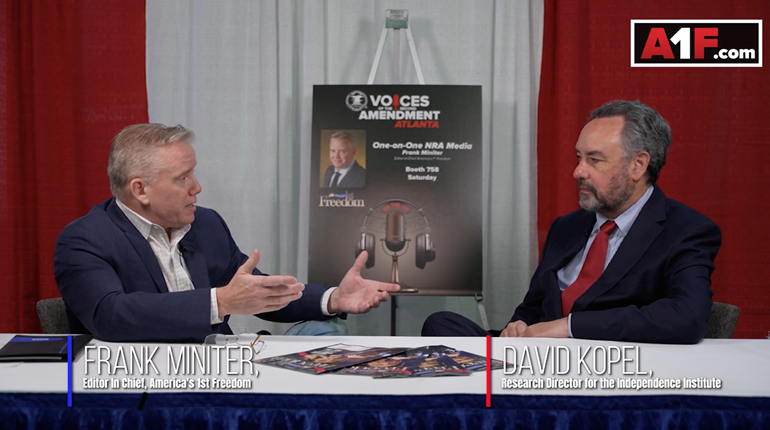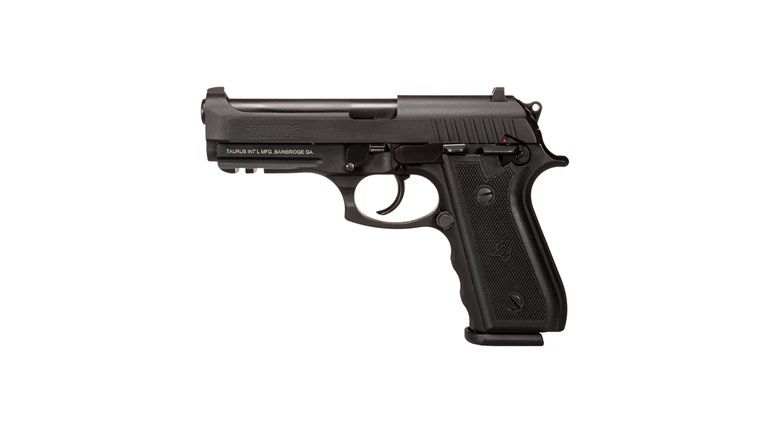
This .46-caliber Girardoni air rifle is the type of air gun that was taken along on the Lewis and Clark Expedition, which began in 1803.
In the 1980s, gun prohibitionists almost accomplished a national ban on then-new polymer-frame pistols, such as Glocks, with the bogus claim that “plastic guns” are invisible to metal detectors. The NRA stood in their way, and this nonsense was stopped. But the case highlights a point often lost in debates about gun rights: Free citizens have always been at the forefront of new firearm technologies.
Back in the 1620s, the most-common firearm was the matchlock, whose powder was ignited by a slow-burning rope. Then a new, more-expensive alternative came along called the flintlock. Unlike the matchlock, a flintlock could be kept always ready, and it was much faster to reload. The most-famous early flintlock adopter was Myles Standish, a military leader of the Plymouth Colony in the 1620s.
The tradition of upgrading to new technologies has continued ever since. When the Lewis and Clark Expedition began in 1803, they brought along the state-of-the-art .46-caliber Girardoni air rifle—a 20-round repeater. While the expedition members were often outnumbered, careful demonstrations of the Girardoni likely deterred attacks.
In the early and mid-nineteenth century, Americans like John M. Hall, Samuel Colt, Daniel Wesson and Oliver Winchester invented breechloaders, metallic cartridges, affordable repeaters and lever-actions. Americans bought these new inventions by the millions. Then, as now, innovations for the civilian market also provided major benefits for the U.S. military.
Later in the century came smokeless powder, the pump-action, the bolt-action and, in 1885, the semi-automatic.
For the standard service rifle, the U.S. Army was relatively slow in adopting new technologies. They stuck with single-shot rifles for a long time before adopting the bolt-action Krag-Jorgensen rifle, chambered in .30-40, in 1892 and then switching to the bolt-action Springfield 1903, chambered in .30-’06. Today, many people consider a wood-stocked .30-’06 to be grandpa’s venerable deer rifle. But historically, the rifle earned its reputation in the U.S. Army infantry.
Throughout the twentieth century, military and citizen arms continued their synergistic relationship. It took the U.S. military until 1936 to produce a reliable semi-automatic service rifle, as the M1 Garand was finally produced shortly before World War II began. It would have been impossible without all the improvements and design experience coming from the civilian market.

Indeed, the civilian firearms industry is, and always has been, essential to the production of firearms for the military. Without a robust civilian firearms industry, manufacturers who had to produce only for a military or police market would have to charge much higher prices and would likely be far slower to innovate.
Most guns used by the U.S. military were originally developed for the citizen market. In Afghanistan, Iraq and Syria, the .50-caliber Barrett rifle has taken out many terrorists, and thereby saved the lives of many civilians and American soldiers. As inventor Ronnie Barrett has explained, that rifle—eventually purchased by the U.S. military—never could have been produced if he hadn’t been able to start by selling it at gun shows.
Every major U.S. Army sidearm was previously produced for the civilian market, or grew out of a manufacturer’s expertise developed for the civilian market. This includes the single-shot pistols in the American Revolution, the Colt Walker in the Mexican War, the Colt M1860 in the Civil War, the Colt 1911, the Beretta M9 and, today, the SIG Sauer M17.
Thus, when Congress enacted the Protection of Lawful Commerce in Arms Act (PLCAA) in 2005 to protect the U.S. firearms business from destruction via abusive lawsuits, the U.S. Department of Defense stated that it “strongly supports” the bill, to “safeguard our national security by limiting unnecessary lawsuits against an industry that plays a critical role in meeting the procurement needs of our men and women in uniform.”
In leading the fight to pass the 2005 PLCAA, the NRA continued to serve one of its founding purposes: to foster the national defense by fostering American citizen acquisition of, and training with, the best-available firearms.
Go to nramuseum.org for more about the Lewis and Clark Girardoni air rifle.


































